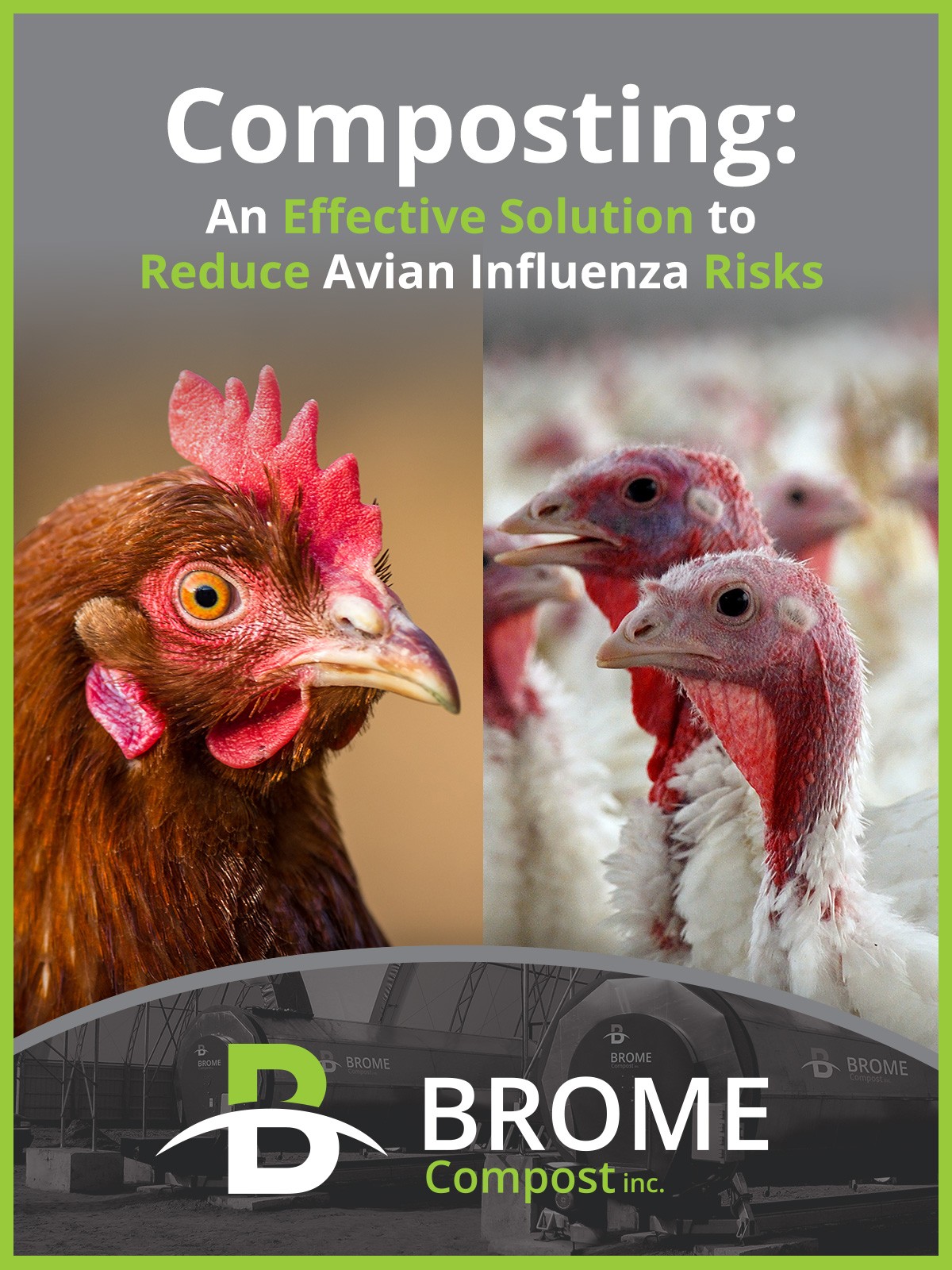Avian influenza is a serious threat to poultry farms. To combat this disease, it is essential to implement rigorous biosecurity measures. Among these measures, composting proves to be an effective and sustainable solution.
Cylinder composting, as proposed by Brome Compost, allows for the hygienic and ecological management of organic waste, including animal carcasses. By maintaining aerobic conditions, cylinder composting ensures the rapid and efficient decomposition of organic matter, thereby reducing contamination risks.
Advantages of Cylinder Composting
A major advantage of cylinder composting is that it reduces or eliminates the attraction of vermin. On-site industrial composting systems allow waste to be treated directly on the farm, minimizing the risk of disease spread. Additionally, cylinder composting contributes to waste reduction and the production of high-quality compost, which can be used as natural fertilizer.
Economic Benefits of Composting
Composting presents significant economic advantages. By reducing the costs of purchasing chemical fertilizers, composting allows farmers to achieve substantial savings. Furthermore, on-site composting reduces transportation costs and fees associated with waste disposal. By transforming organic waste into compost, farmers can improve soil fertility, thereby increasing productivity and agricultural yields.
Financial Impacts of Composting Compared to Disease Costs
The costs associated with avian influenza can be considerable, including flock losses and vaccination expenses. In comparison, composting dead animal carcasses on the farm can offer a more economical solution. Cylinder composting allows for the hygienic and ecological management of carcasses, reducing contamination risks and the costs associated with waste management.
Renderers: Vectors of Disease Transmission
Renderers, responsible for the collection and disposal of animal carcasses, can be vectors of disease transmission. By transporting carcasses from one site to another, they can contribute to the spread of pathogens. On-site composting, by avoiding the transport of carcasses, reduces this risk and improves farm biosecurity.
Conclusion
In conclusion, cylinder composting is an effective solution to reduce avian influenza risks. It allows for the hygienic management of organic waste, reduces the attraction of vermin, and produces high-quality compost. By integrating this method with rigorous biosecurity practices, farmers can protect their flocks and achieve substantial savings compared to disease costs, including flock losses and vaccination.
 Brome Compost
Brome Compost